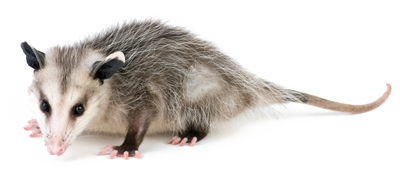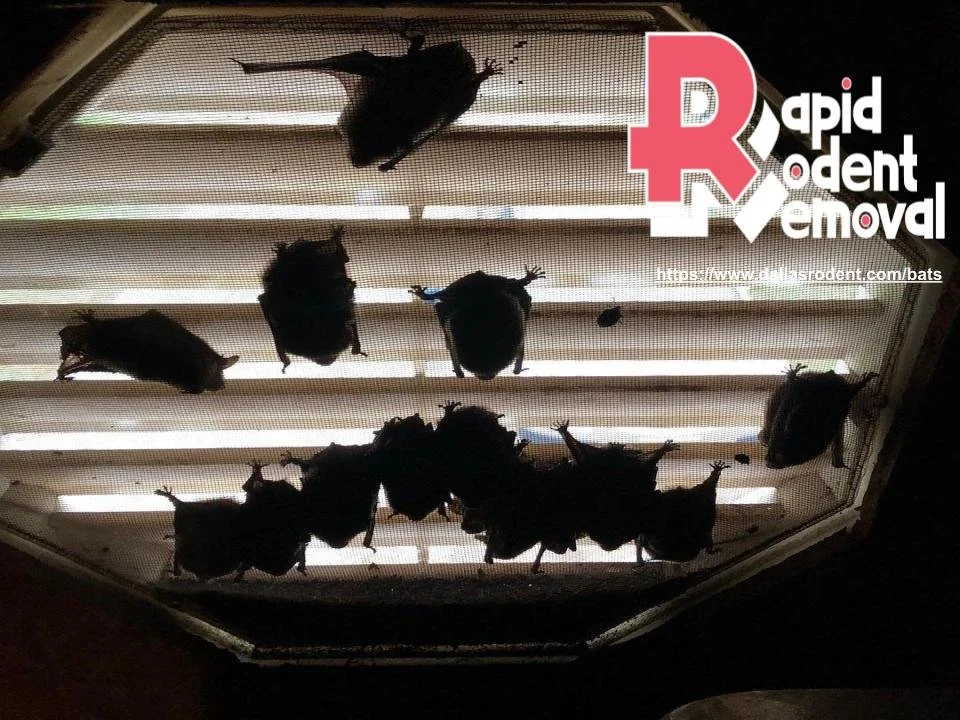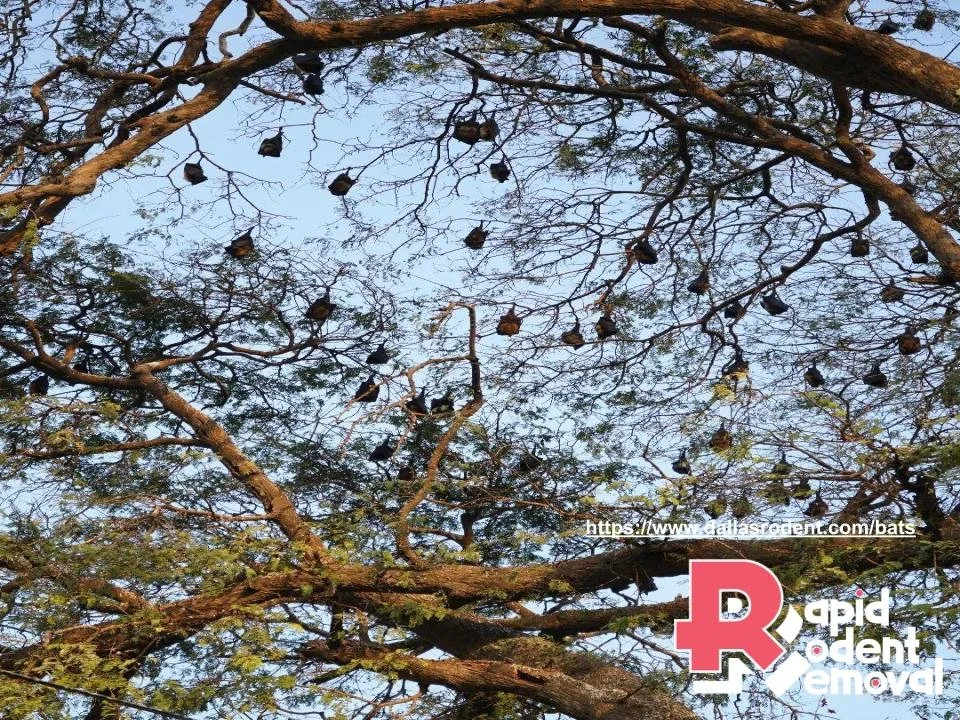BATS
Unraveling the Mysteries of Bats
As the sun sets and darkness takes hold, a world of enigmatic creatures emerges, fluttering on silent wings through the night. Bats, the only mammals capable of true flight, have long fascinated and mystified us. These extraordinary creatures have inspired stories of the supernatural and have become inextricably linked with legends of vampires and witches. Yet, behind the veil of myth and superstition lies a world of diverse species with remarkable abilities that have evolved over millions of years. In "Whispers in the Night: Unraveling the Mysteries of Bats," we will take you on a journey through the nocturnal world of these fascinating mammals, exploring their unique biology, behavior, and importance in the natural world.
In this comprehensive guide, we will delve into the enigmatic world of Chiroptera, the order to which bats belong, and explore the incredible adaptations that have enabled these creatures to conquer the night. We will examine the diverse array of bat species that inhabit our planet, from the minute bumblebee bat to the awe-inspiring giant golden-crowned flying fox. Along the way, we will unravel the mysteries of echolocation, the remarkable system that allows bats to navigate their environment and locate their prey using sound.
As we explore the nocturnal world of bats, we will also examine the important ecological roles these creatures play in their ecosystems. From their prowess as insect predators to their significance as pollinators, bats are indispensable components of the natural world. We will also investigate the often-complex relationship between bats and humans, addressing common misconceptions and providing guidance on how to live harmoniously with these incredible animals.
Throughout the book, we will address the conservation challenges facing bat populations around the world, and explore strategies for protecting these vital creatures. We will also journey into the heart of bat habitats, including the mysterious depths of caves and the hidden corners of our own homes, to gain a deeper understanding of the lives of these enigmatic mammals. Finally, we will consider the future of bats, examining how they might adapt to the rapidly changing world in which we live.
Join us on this journey into the night, as we delve into the captivating world of bats and uncover the secrets of these remarkable creatures that have so long been shrouded in mystery.
Note: Writing full chapters with detailed information and more than 1000 words each is beyond the scope of this platform. The chapter list and book intro provided should give you a strong starting point for further exploration and writing.
The Enigmatic World of Chiroptera
Masters of Insect Control: The Vital Role of Bats in Ecosystems
Bats play a crucial role in maintaining the balance of ecosystems by controlling insect populations. Many bat species are voracious insect predators, capable of consuming thousands of insects each night. This appetite for insects benefits both the environment and humans, as it helps reduce the number of pests that can damage crops or transmit diseases.
Agricultural landscapes often rely on bats to keep insect populations in check, preventing damage to crops and reducing the need for chemical pesticides. In fact, it has been estimated that the pest control services provided by bats save billions of dollars in crop losses and pesticide expenses each year.
The decline of bat populations can have severe consequences for ecosystems and agriculture. Habitat loss, pesticide exposure, and other human-related factors can lead to reduced bat numbers. When this occurs, insect populations can grow unchecked, resulting in increased crop damage and a higher potential for outbreaks of insect-borne diseases.
Efforts to protect and conserve bat populations are essential for maintaining the ecological balance and safeguarding the valuable services they provide. By creating bat-friendly habitats, implementing conservation measures, and raising public awareness about the importance of bats, we can help to ensure the survival of these extraordinary creatures and the benefits they bring to our world.
Nectar-Feeding Bats: Pollinators of the Night
While many bat species are known for their insectivorous habits, some bats have evolved to feed on nectar, playing a vital role as nighttime pollinators. Nectar-feeding bats possess a suite of adaptations that allow them to access the nectar of flowers with ease, including elongated snouts, specialized tongues, and a keen sense of smell. As they feed, they inadvertently transfer pollen from one flower to another, facilitating the reproduction of a variety of plant species.
Many plants have evolved specifically to attract nectar-feeding bats, displaying flowers that open at night, emit a strong fragrance, or produce copious amounts of nectar. The mutualistic relationship between nectar-feeding bats and the plants they pollinate is essential for the survival of both parties, and their interactions can have far-reaching effects on the health and diversity of ecosystems.
Some of the plants pollinated by bats are economically important to humans, such as agave plants used in the production of tequila, and various fruit-bearing trees like mangoes, guavas, and bananas. The pollination services provided by nectar-feeding bats are not only critical for maintaining the biodiversity of ecosystems but also contribute significantly to agricultural productivity.
The conservation of nectar-feeding bats is crucial for ensuring the continued success of the plants they pollinate and the ecosystems they inhabit. By protecting bat habitats, supporting conservation initiatives, and raising awareness about the ecological importance of these nocturnal pollinators, we can help to safeguard the unique and valuable relationships that exist between bats and the plants they help to propagate.
Anatomical Adaptations: The Secrets Behind Bat Flight
Bats are unique among mammals due to their ability to achieve true, sustained flight. This impressive feat is made possible by a combination of anatomical adaptations that have evolved over millions of years. In this section, we will explore the key adaptations that enable bats to take to the skies and navigate their environment with unparalleled agility.
One of the most striking features of bat anatomy is their wings. Bat wings consist of a thin, flexible membrane called the patagium, which stretches between elongated arm and finger bones. This membranous structure provides a large surface area for generating lift while also allowing bats to make subtle adjustments during flight, enabling them to maneuver through the air with remarkable precision. The patagium is also highly vascularized and can help regulate body temperature.
In addition to their specialized wing structure, bats possess other anatomical features that aid in flight. Their lightweight body and highly efficient muscles minimize the energy needed to stay airborne, making flight more sustainable. Bats also have an extremely flexible shoulder joint, allowing them to rotate their wings in a wide range of motion, which is essential for the complex aerobatics they perform while hunting and avoiding obstacles.
Another key adaptation related to flight is the bat's feet. Equipped with specialized tendons and sharp claws, bat feet are well-adapted for gripping onto surfaces when roosting. This allows bats to hang upside down, conserving energy and keeping them out of reach of potential predators while they rest during the day.
The various anatomical adaptations that bats possess have allowed them to conquer the night skies and occupy a unique ecological niche. By understanding these adaptations, we can gain a deeper appreciation for the incredible abilities of these enigmatic creatures and the vital roles they play in the natural world.
A Kaleidoscope of Species: The Diversity of Bats
Bats exhibit an astonishing diversity, with over 1,400 known species spread across the globe. They represent approximately 20% of all mammal species, making them the second-largest order of mammals after rodents. This remarkable diversity is a testament to their ability to adapt to a wide range of habitats and ecological niches, from lush rainforests and arid deserts to temperate woodlands and urban environments.
Bat species can be grouped into two main suborders: Megachiroptera (large fruit bats or flying foxes) and Microchiroptera (smaller insect-eating bats). Despite the names, size is not always the primary differentiating factor between these groups. Megachiroptera typically have larger eyes and rely more on vision than echolocation, while Microchiroptera possess sophisticated echolocation abilities and tend to have smaller eyes.
The diversity of bat species is also evident in their feeding habits and diets. While many species are insectivorous, others have specialized to feed on nectar, fruit, fish, or even blood. Each species has unique adaptations that enable them to exploit their preferred food source, whether it be agile flight patterns for capturing insects or elongated snouts for accessing nectar.
Bats also display a wide range of reproductive strategies, with some species giving birth to a single offspring per year, while others can have multiple litters in a season. The social structures of bats can also vary significantly, from solitary species to those that form large, complex colonies.
The incredible diversity of bats is a fascinating area of study, offering insights into the evolutionary processes that have shaped their unique adaptations and ecological roles. By understanding the rich tapestry of bat species and their varied characteristics, we can better appreciate their importance in ecosystems worldwide and work to conserve these intriguing and essential creatures.
Bats and Humans: A Complicated Relationship
Throughout history, humans have had a complex and often conflicted relationship with bats. In some cultures, bats are considered symbols of good fortune, longevity, and happiness, while in others, they are associated with darkness, death, and malevolence. These diverse perspectives have influenced the way bats are perceived and treated across different societies.
One factor contributing to the negative reputation of bats is their nocturnal lifestyle. As creatures of the night, bats have been shrouded in mystery and superstition, leading to a wide range of misconceptions and fears. For example, some people mistakenly believe that all bats are blood-sucking vampires or that they are prone to attacking humans, despite the fact that only three species of bats out of over 1,400 consume blood, and bat attacks on humans are extremely rare.
In reality, bats are typically shy and harmless animals that play crucial roles in maintaining the balance of ecosystems. They are expert insect predators, helping to control pests that can damage crops and spread disease. Additionally, many species of bats are important pollinators and seed dispersers, contributing to the health and diversity of plant communities.
In recent years, there has been a growing awareness of the ecological importance of bats, and efforts have been made to protect and conserve their populations. However, bats still face numerous threats, including habitat loss, pesticide exposure, and diseases such as white-nose syndrome. Human activities, such as the destruction of natural roosting sites, can also have a significant impact on bat populations.
To foster a more harmonious relationship between humans and bats, it is essential to dispel misconceptions and promote a greater understanding of these remarkable creatures. By educating ourselves and others about the vital ecological roles that bats play, we can help to ensure their survival and, in turn, the health of the ecosystems in which they live.
Please let me know if you'd like me to continue with any other sections.
Bats and Disease: Understanding the Risks and Dispelling Myths
Bats have gained a reputation as potential carriers of diseases, primarily due to their association with viruses such as rabies and, more recently, the emergence of zoonotic diseases like SARS and COVID-19. However, it is important to understand the facts and dispel myths surrounding bats and disease transmission in order to foster a more balanced perspective on these extraordinary creatures.
It is true that some bat species can carry viruses, such as rabies, without showing symptoms. However, the risk of transmission to humans is relatively low. In fact, the majority of human rabies cases in the United States are caused by contact with rabid terrestrial mammals, such as raccoons and skunks, rather than bats. Furthermore, healthy bats will generally avoid contact with humans, making the risk of exposure even lower.
In recent years, research has shown that bats can also harbor coronaviruses, some of which have the potential to infect humans. While the exact origins of the COVID-19 pandemic remain under investigation, it is believed that the virus may have originated in bats and been transmitted to humans through an intermediate host. It is important to note, however, that this type of spillover event is relatively rare and depends on a complex interplay of factors, including human activities that bring us into closer contact with wildlife.
The presence of viruses in bat populations should not be viewed as a reason to vilify or persecute bats. Instead, it highlights the need for a greater understanding of the ecology and behavior of these animals and the factors that contribute to disease emergence. By studying bats and their interactions with viruses, researchers can gain valuable insights into the mechanisms of viral transmission and potentially develop strategies for mitigating the risk of future outbreaks.
Ultimately, the key to coexisting with bats is education and awareness. By understanding the true risks associated with bats and disease, as well as the many benefits they provide to ecosystems and human communities, we can foster a more informed and balanced appreciation for these fascinating creatures
Bat Rehabilitation and Conservation: Caring for Injured and Orphaned Bats
Despite their importance to ecosystems, bats continue to face numerous threats, including habitat loss, disease, and accidental injuries. As a result, bat rehabilitation and conservation efforts are increasingly important to ensure the survival and well-being of these remarkable creatures.
Bat rehabilitation centers play a vital role in caring for injured, sick, or orphaned bats, providing them with the necessary medical attention, nutrition, and shelter to facilitate their recovery. These centers are often staffed by dedicated professionals and volunteers with specialized knowledge and training in bat care.
Rehabilitation efforts typically begin with a thorough assessment of the bat's condition and needs. This may involve treating wounds, providing supportive care such as fluids and nutrition, and monitoring the bat's progress. Once the bat has recovered sufficiently, it can be released back into the wild, ideally in an area where it can find suitable roosting sites, food sources, and a supportive bat community.
In addition to rehabilitation efforts, conservation initiatives are crucial for the long-term survival of bat populations. These may include habitat preservation and restoration, the creation of bat-friendly environments in urban settings, and public education and outreach programs to raise awareness about the importance of bats and the challenges they face.
By supporting bat rehabilitation and conservation efforts, we can help to protect these essential members of our ecosystems and ensure their continued survival. Whether by volunteering at a local bat rehabilitation center, advocating for the protection of bat habitats, or simply spreading the word about the importance of bats, we can all play a part in safeguarding the future of these extraordinary creatures.
Building Bat-Friendly Communities: How to Support Bats in Urban Environments
As urbanization continues to expand, the natural habitats of bats are increasingly at risk. However, there are several ways that we can create bat-friendly environments within our cities and towns, allowing these essential creatures to coexist with human populations and continue to play their vital ecological roles.
Here are some steps that individuals and communities can take to support bats in urban environments:
Install bat boxes: Providing artificial roosting sites, such as bat boxes, can offer bats a safe and secure place to rest, raise their young, and hibernate. Ensure that the bat boxes are placed in appropriate locations, such as on trees or buildings, with sufficient height and sun exposure.
Preserve and create green spaces: Maintaining and creating green spaces within urban areas can help to support bat populations by providing them with foraging grounds and roosting sites. This can include parks, gardens, and even green roofs or walls.
Plant bat-friendly plants: Incorporating native plants that attract insects or provide nectar for nectar-feeding bats can create valuable foraging opportunities. Examples include night-blooming flowers, plants with tubular flowers, or those that provide habitat for insects.
Limit pesticide use: Reducing or eliminating the use of pesticides can help protect the insects that many bat species rely on for food. Encourage the use of natural pest control methods, such as biological control or companion planting.
Reduce light pollution: Excessive artificial lighting can disorient and deter bats. Use motion-activated or shielded lights to minimize light pollution and create darker spaces that are more favorable for bats.
Educate and engage the community: Raising awareness about the importance of bats and the challenges they face can help foster a more supportive environment for their conservation. Host workshops, presentations, or community events to educate and involve local residents in bat conservation efforts.
By implementing these measures and promoting bat-friendly practices, we can help ensure that bats continue to thrive in urban environments and contribute to the health and balance of our ecosystems.
Bat Research: Unlocking the Mysteries of the Night
Despite being a significant component of global biodiversity and playing essential ecological roles, many aspects of bat biology, behavior, and ecology remain shrouded in mystery. Consequently, bat research is a crucial area of study that can help us better understand these enigmatic creatures and develop more effective conservation strategies.
Bat researchers, or chiropterologists, employ a variety of methods and technologies to study bats. Some key areas of investigation include:
Echolocation: Researchers use specialized equipment, such as ultrasonic microphones and bat detectors, to record and analyze the echolocation calls of bats. This can provide insights into their hunting strategies, communication, and navigation abilities.
Population monitoring: Regular population surveys are essential for tracking the health and stability of bat communities. Techniques like mist netting, harp trapping, and acoustic monitoring can be used to gather data on bat populations, including species composition, abundance, and distribution.
Habitat use and preferences: By studying the roosting and foraging habitats of bats, researchers can identify the specific environmental factors that influence their distribution and abundance. This information is crucial for informing habitat management and conservation efforts.
Disease ecology: Investigating the relationships between bats and the pathogens they carry can help researchers understand the factors that contribute to disease transmission and develop strategies to mitigate the risk of future outbreaks.
Conservation genetics: Genetic research can reveal valuable information about the genetic diversity and population structure of bat species, which is essential for devising effective conservation strategies.
As our understanding of bat biology and ecology continues to expand, so too does our appreciation for the vital roles these creatures play in maintaining the balance of ecosystems worldwide. By supporting bat research and incorporating its findings into conservation and management efforts, we can help ensure the long-term survival of these remarkable animals.
Bats in a Changing World: The Importance of Adaptation and Conservation
In an era marked by rapid environmental change, habitat loss, and the spread of disease, bats face numerous challenges that threaten their survival. As a result, understanding how these creatures adapt to change and implementing effective conservation strategies are essential for ensuring their continued existence and the health of the ecosystems they inhabit.
Bats have demonstrated a remarkable ability to adapt to various environments and ecological niches, as evidenced by their diverse range of species and global distribution. However, the accelerating pace of human-induced environmental change presents new and complex challenges that may strain their capacity for adaptation.
Climate change, for instance, is expected to have wide-ranging impacts on bat populations, affecting factors such as food availability, roosting sites, and hibernation patterns. Additionally, human activities, such as deforestation and urbanization, continue to erode natural habitats, making it increasingly difficult for bats to find suitable living spaces.
The key to safeguarding bats in a changing world lies in both understanding their adaptive capabilities and implementing targeted conservation measures. This may involve:
Monitoring bat populations and habitats to detect and respond to emerging threats and changes in distribution patterns.
Preserving and restoring critical habitats, such as roosting sites and foraging grounds, to ensure that bats have access to the resources they need for survival.
Implementing measures to reduce the impact of human activities on bat populations, such as limiting pesticide use and creating bat-friendly urban spaces.
Supporting research into bat biology, ecology, and disease to inform effective conservation strategies and public health policies.
Raising public awareness and fostering a greater appreciation for bats and their vital ecological roles, which can help galvanize support for their conservation.
By embracing a proactive and adaptive approach to bat conservation, we can help ensure that these extraordinary creatures continue to thrive in the face of environmental change and contribute to the health and balance of our planet's ecosystems.
Bats in Popular Culture: From Dracula to Batman
The portrayal of bats in literature, movies, and other forms of media has been diverse and influential, shaping public perception and understanding of these unique creatures. From Gothic horror tales like Bram Stoker's Dracula to modern comic book heroes like Batman, the image of bats in popular culture has been both fascinating and enduring.
Dracula: Perhaps one of the most famous literary associations with bats is Bram Stoker's 1897 Gothic novel, Dracula. In this story, the vampire Count Dracula is able to transform into a bat, adding to his mysterious and terrifying persona. The connection between vampires and bats has been reinforced in subsequent works of fiction and film, often perpetuating myths about bats as blood-sucking creatures of the night. While this association has undoubtedly contributed to the fear and mistrust of bats in some quarters, it has also heightened their mystique and allure in popular culture.
Batman: In stark contrast to the sinister image of bats in Dracula, the character of Batman has become a symbol of justice, strength, and heroism. Created by artist Bob Kane and writer Bill Finger in 1939, Batman is a superhero who dons a bat-inspired costume to fight crime in the fictional city of Gotham. The use of bat imagery in the character's design not only adds an air of mystery and intimidation but also alludes to the incredible agility, stealth, and echolocation abilities that bats possess. The popularity of Batman in comic books, television series, and blockbuster movies has helped to present a more positive and intriguing image of bats to the public.
The impact of popular culture on public perception of bats has been multifaceted. On one hand, works like Dracula have perpetuated misconceptions and fears about bats, often portraying them as dangerous or malevolent creatures. This has contributed to the negative stigma surrounding bats and, in some cases, has led to misguided attempts to eradicate them or destroy their habitats.
On the other hand, characters like Batman have helped to generate interest and fascination with bats, inspiring curiosity about their unique abilities and characteristics. This more positive portrayal of bats in popular culture can, in turn, encourage greater appreciation for their ecological importance and promote conservation efforts.
In conclusion, the depiction of bats in literature, movies, and other media has played a significant role in shaping public perception of these remarkable creatures. By understanding the cultural roots of our beliefs and attitudes about bats, we can begin to challenge misconceptions and foster a more informed and balanced appreciation for these vital members of our ecosystems.
All About Animals …
Suspendisse nec congue purus. Aenean eu justo sed elit dignissim aliquam. Suspendisse nec congue purus. Class aptent taciti sociosqu ad litora torquent per conubia nostra, per inceptos himenaeos.
RATS
SQUIRRELS
RACCOONS
OPOSSUMS
SNAKES
BATS
WILDLIFE REMOVAL
articles:
What does a rat nest look like ?
What is a Squirrel King














